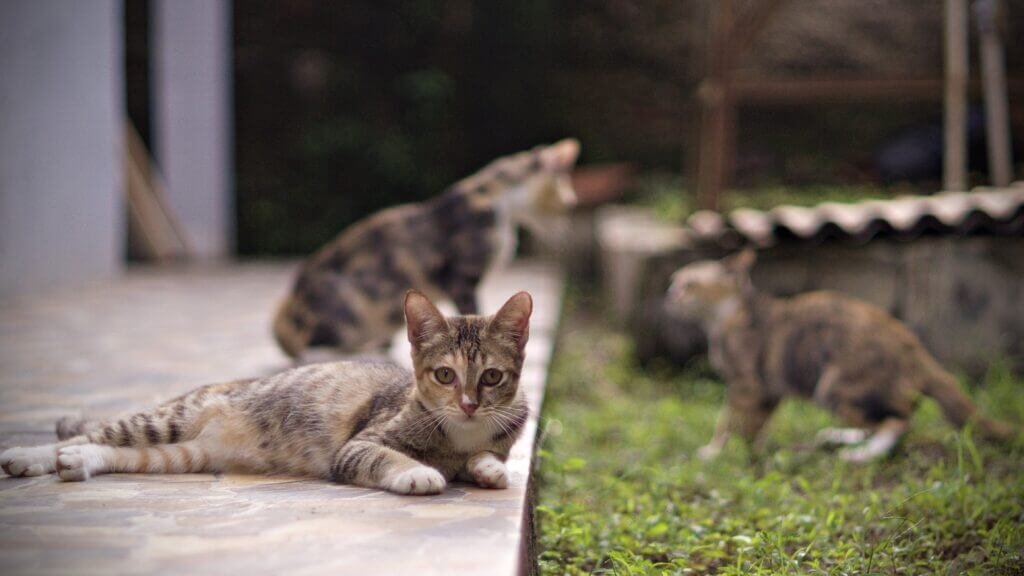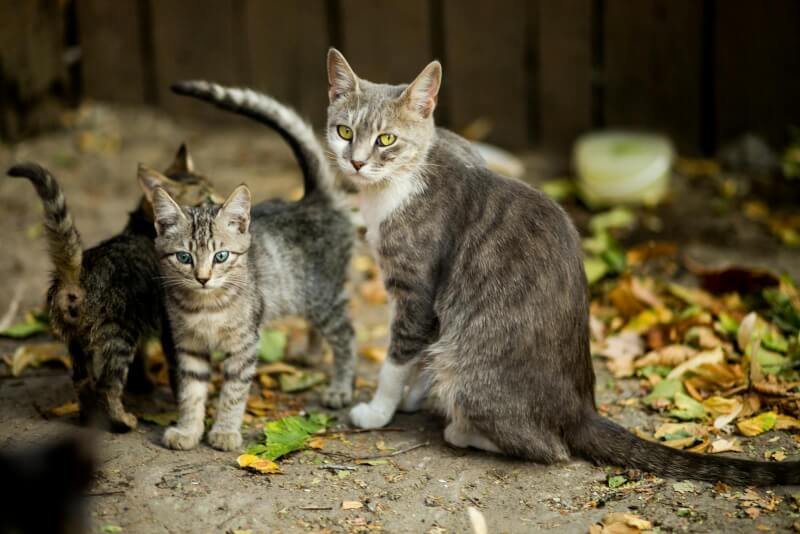If you’ve ever come home to find your cat meowing incessantly, scratching at furniture, or engaging in other destructive behaviors, it’s possible that your feline friend may be experiencing separation anxiety. Just like humans, cats can also struggle with being apart from their loved ones. But fear not! In this article, we will explore effective strategies and tips to help you deal with a cat that has separation anxiety, ensuring both you and your little friend can enjoy a peaceful and stress-free coexistence.
Understanding Separation Anxiety in Cats
Separation anxiety in cats is a condition in which a cat becomes excessively anxious or distressed when it is separated from its owner or familiar surroundings. Just like humans, cats can experience anxiety, and it is important to understand the causes and symptoms in order to provide the necessary support and care for them.
What is separation anxiety?
Separation anxiety refers to the fear or distress a cat experiences when left alone. This can manifest in various ways, such as excessive vocalization, destructive behavior, inappropriate elimination, or even self-harm. It is important to note that separation anxiety is different from general feline behavior, as it involves an intense fear or anxiety response specifically triggered by being separated from a beloved human or known environment.
Causes of separation anxiety in cats
Separation anxiety in cats can have various causes, including:
- Past trauma or negative experiences: Cats who have experienced abandonment, neglect, or a traumatic event may be more prone to separation anxiety.
- Early life experiences: Cats that were weaned too early or experienced early separation from their mother and littermates may also be more likely to develop separation anxiety.
- Change in household dynamics: Cats are sensitive to changes in their environment, such as a new household member, moving to a new home, or a change in their owner’s schedule. These changes can trigger anxiety and separation-related behaviors.
Recognizing the symptoms
It is important to recognize the symptoms of separation anxiety so that you can provide appropriate care and support for your cat. Some common symptoms include:
- Excessive vocalization: Cats with separation anxiety may meow excessively, yowl, or even howl when left alone.
- Destructive behavior: Cats may engage in destructive behavior, such as scratching furniture, excessive digging, or chewing on objects in response to their anxiety.
- Inappropriate elimination: Some cats with separation anxiety may urinate or defecate outside the litter box, often targeting items that belong to their owners as a form of protest or marking their territory.
- Over-grooming or self-harm: Cats may excessively groom themselves to soothe their anxiety, leading to hair loss or even self-inflicted wounds.
- Pacing or restlessness: Cats with separation anxiety may exhibit signs of restlessness, pacing, or constantly seeking attention.
If you notice any of these symptoms, it is essential to address the issue and provide the necessary support for your cat.
Creating a Safe and Comfortable Environment
To help alleviate separation anxiety in your cat, creating a safe and comfortable environment is crucial. Providing dedicated spaces, environmental stimulation, and hiding spots can help your cat feel secure even when you are not around.
Provide a dedicated space for your cat
Set up a designated area for your cat that includes all its necessities, such as a comfortable bed, food and water bowls, and a litter box. This will create a sense of security and familiarity for your cat, reducing its anxiety when left alone.
Make the environment stimulating
Keep your cat’s environment engaging and stimulating by providing toys, scratching posts, and interactive play opportunities. This can help distract and entertain your cat, preventing boredom and reducing anxiety.
Ensure there are hiding spots
Cats often feel safe and secure when they have hiding spots where they can retreat to when they are feeling anxious. Provide hiding spots such as covered beds, cat trees with enclosed areas, or even cardboard boxes with holes cut out. These hiding spots can serve as safe havens for your cat when they need some alone time.
Establishing a Consistent Routine
Establishing a consistent routine can help your cat feel more secure and reduce anxiety. Cats thrive on predictability, so maintaining a regular feeding schedule, playtime routine, and providing interactive toys are essential.
Stick to a regular feeding schedule
Feeding your cat at the same time each day helps establish a routine and gives your cat a sense of security. This routine can help reduce anxiety by providing structure and predictability in your cat’s daily life.
Implement a predictable playtime routine
Engaging in regular play sessions with your cat before leaving the house can help release their pent-up energy and anxiety. Set aside dedicated playtime each day to tire your cat out and make them feel content and relaxed.
Incorporate interactive toys
Interactive toys, such as puzzle feeders or food-dispensing toys, can provide mental stimulation and keep your cat engaged even when you are not around. These toys can help distract your cat and alleviate separation anxiety by keeping their minds occupied.
Gradual Desensitization and Counterconditioning
Gradual desensitization and counterconditioning are techniques that can help your cat overcome separation anxiety by gradually exposing them to their anxiety triggers in a positive and controlled manner.
Start with short departures
Begin by leaving your cat alone for short periods and gradually increase the duration over time. This helps your cat build up tolerance and confidence, reducing their anxiety associated with being alone.
Leave comfort objects or calming scents
Leaving familiar comfort objects, such as a favorite blanket or shirt with your scent, can provide reassurance and comfort to your cat when you are not present. Additionally, using calming scents, such as lavender or pheromone sprays, can help create a calming environment for your cat.
Reward and praise calm behavior
When your cat exhibits calm behavior while you are away, make sure to reward and praise them. Positive reinforcement helps associate being alone with positive experiences, gradually reducing their anxiety over time.

Engaging in Environmental Enrichment
Environmental enrichment plays a crucial role in reducing separation anxiety by providing mental and physical stimulation for your cat. Here are some ways to promote enrichment:
Use puzzle feeders or food-dispensing toys
Puzzle feeders or food-dispensing toys require your cat to work for their food, keeping them mentally stimulated and entertained. These toys can help alleviate boredom and anxiety by providing a challenge for your cat to solve.
Provide scratching posts and climbing structures
Cats have a natural instinct to scratch and climb. Providing appropriate scratching posts and climbing structures allows your cat to engage in these natural behaviors and burn off excess energy, reducing anxiety.
Include interactive play sessions
Engage in interactive play sessions with your cat using toys such as feather wands or laser pointers. These activities not only provide physical exercise but also create a bond between you and your cat, helping them feel secure and loved.
Utilizing Behavior Modification Techniques
Behavior modification techniques can be effective in managing separation anxiety in cats. By modifying certain behaviors and responses, you can help your cat feel more comfortable and secure when alone.
Keep departures and arrivals low-key
When leaving or returning home, avoid making a big fuss or giving excessive attention to your cat. This helps normalize departures and arrivals, reducing any association with anxiety or excitement.
Ignore attention-seeking behaviors
If your cat engages in attention-seeking behaviors, such as meowing or pawing at you before you leave, it is important to ignore these behaviors. Responding to these behaviors may reinforce their anxiety and make it more difficult to break the cycle.
Use positive reinforcement and clicker training
Positive reinforcement and clicker training techniques can help reinforce calm behaviors and redirect anxiety. Reward your cat for calm behavior and gradually shape their responses to separation cues using positive reinforcement methods.
Seeking Professional Advice
If your cat’s separation anxiety persists or worsens despite your best efforts, it may be helpful to seek professional advice. Consulting with a veterinarian or working with a feline behaviorist can provide valuable insights and customized strategies for managing your cat’s anxiety.
Consult with a veterinarian
A veterinarian can rule out any underlying medical conditions that may be contributing to your cat’s anxiety. They can also provide guidance on potential medication options if necessary.
Consider working with a feline behaviorist
A feline behaviorist specializes in understanding and addressing behavioral issues in cats. They can help assess your cat’s specific needs and develop a tailored behavior modification plan to manage their separation anxiety.
Explore potential medication options
In severe cases of separation anxiety, medication prescribed by a veterinarian may be considered. Medication can help alleviate anxiety symptoms and provide temporary relief while behavior modification techniques are being implemented.
Addressing Potential Underlying Issues
It is important to consider and address any potential underlying issues that may be contributing to your cat’s separation anxiety. These factors can vary from medical conditions to changes in the household or past traumas.
Rule out medical conditions
Certain medical conditions, such as urinary tract infections or gastrointestinal disorders, can cause or exacerbate anxiety in cats. It is essential to rule out any underlying medical issues by consulting with a veterinarian before proceeding with behavior modification techniques.
Identify any changes in the household
Changes in the household dynamics, such as the addition of a new pet or a change in routine, can trigger separation anxiety in cats. Identifying and addressing these changes can help alleviate your cat’s anxiety.
Address any past traumas or experiences
If your cat has experienced past traumas or negative experiences, it is important to provide them with a safe and secure environment to help rebuild their trust. Gentle and patient interactions, along with positive reinforcement, can help your cat overcome any previous traumas.
Preventing Separation Anxiety in Cats
Prevention is always better than cure when it comes to separation anxiety in cats. By incorporating certain practices from a young age, you can help your cat develop confidence and independence, reducing the likelihood of separation anxiety.
Practice gradual separations from a young age
Expose your cat to short separations from a young age, gradually increasing the duration over time. This helps your cat become accustomed to being alone and reduces the likelihood of them developing separation anxiety.
Avoid reinforcing clingy behaviors
While it is important to provide love and attention to your cat, it is equally important to avoid reinforcing clingy behaviors. Encourage independence and provide plenty of opportunities for your cat to explore and engage in solo activities.
Provide plenty of mental and physical stimulation
Regular mental and physical exercise is essential in preventing separation anxiety in cats. Ensure your cat has access to toys, scratching posts, and interactive play to keep them stimulated and satisfied.
Conclusion
Separation anxiety in cats is a challenging condition that requires understanding and patience. By creating a safe and comfortable environment, establishing a consistent routine, utilizing behavior modification techniques, and seeking professional advice when necessary, you can help your cat overcome separation anxiety and lead a happier, healthier life. Prevention plays a crucial role, so start early and provide plenty of mental and physical stimulation to promote independence and confidence in your feline friend. Remember, with love and support, you can make a positive difference in your cat’s well-being.


